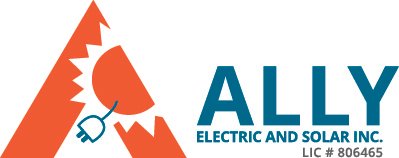Empowering NEM 2.0 Customers: Adding Backup Batteries Without Losing Benefits
As the world marches forward towards a more sustainable future, homeowners are increasingly turning to renewable energy sources like solar power to reduce their carbon footprint and energy bills. Net Energy Metering (NEM) programs have been instrumental in incentivizing this transition, and NEM 2.0 customers have been at the forefront of this movement. With the recent shift from NEM 2.0 to NEM 3.0, there have been concerns about potential changes in benefits for solar users. However, there's good news for current NEM 2.0 customers: the opportunity to integrate backup batteries without sacrificing their NEM 2.0 status.
Net Energy Metering 2.0 (NEM 2.0) has been a crucial program, enabling customers to offset their electricity bills by selling excess solar energy back to the grid. This has not only helped individuals save money but has also contributed to the overall reduction of carbon emissions by promoting the use of renewable energy sources. However, with the introduction of NEM 3.0, there have been concerns among solar users about potential changes that might affect their benefits.
One of the key concerns for NEM 2.0 customers has been the ability to add backup batteries to their solar systems without losing their NEM 2.0 status. With the increasing frequency of power outages and the growing interest in energy independence, many homeowners are considering adding battery storage to their solar installations. However, the transition to NEM 3.0 raised questions about whether this would impact their existing benefits.
Fortunately, NEM 2.0 customers can add backup batteries to their solar systems without jeopardizing their NEM 2.0 status. This means that homeowners can enjoy the benefits of both solar energy generation and battery storage, while still taking advantage of the favorable terms offered under NEM 2.0.
The ability to add backup batteries without losing NEM 2.0 status is a significant win for customers. It provides them with greater flexibility and resilience in managing their energy needs, particularly during times of grid outages or when electricity rates are high. By storing excess solar energy in batteries, homeowners can ensure a reliable power supply even when the sun isn't shining, reducing their dependence on the grid and potentially saving even more on their electricity bills.
Moreover, integrating battery storage into solar systems contributes to the overall stability and resilience of the grid. By storing excess energy locally, homeowners can reduce strain on the grid during peak demand periods, helping to alleviate stress on the utility infrastructure and improve system reliability for everyone.
For NEM 2.0 customers considering adding backup batteries to their solar installations, it's essential to explore the available options and consult with solar and battery storage experts to determine the best solution for their specific needs. Additionally, staying informed about any updates or changes to the NEM program can help homeowners make informed decisions about their energy investments.
In conclusion, the ability for NEM 2.0 customers to add backup batteries without losing their NEM 2.0 status is a positive development that enhances both the resilience of individual homeowners and the stability of the grid. By embracing solar energy generation and storage technologies, homeowners can take control of their energy future while continuing to benefit from the incentives offered under the NEM 2.0 program. As we continue to transition towards a more sustainable energy landscape, initiatives like this play a crucial role in empowering individuals to contribute to a greener, more resilient future.

